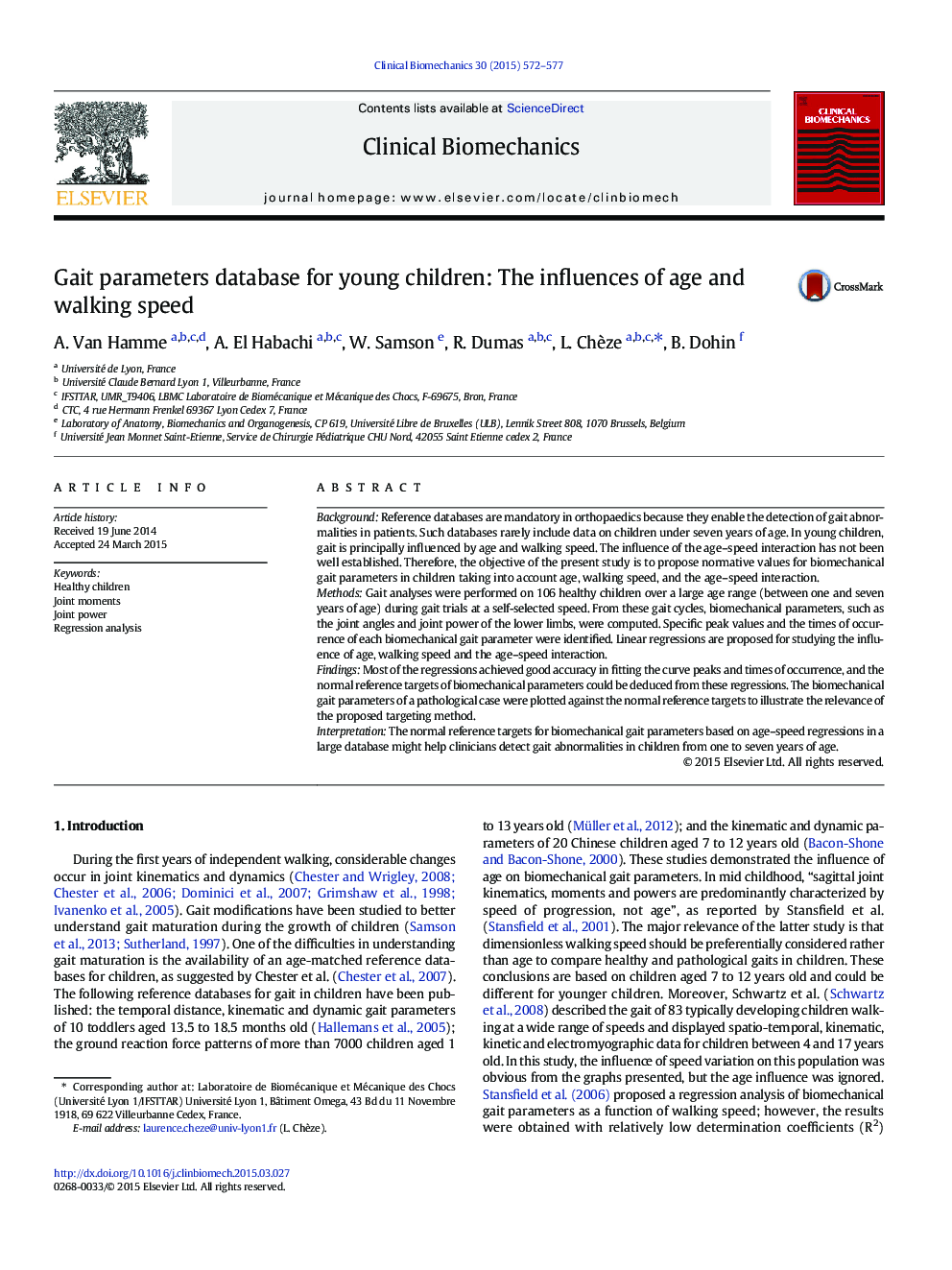| Article ID | Journal | Published Year | Pages | File Type |
|---|---|---|---|---|
| 4050240 | Clinical Biomechanics | 2015 | 6 Pages |
•This study included more than 100 healthy children from one to seven years old.•Our study considered both age and speed of progression influence on children gait.•Regression models were processed for the peak values and their times of occurrence.•An original method of normal reference targets was proposed.•The normal reference targets might help clinicians in detecting gait abnormalities.
BackgroundReference databases are mandatory in orthopaedics because they enable the detection of gait abnormalities in patients. Such databases rarely include data on children under seven years of age. In young children, gait is principally influenced by age and walking speed. The influence of the age–speed interaction has not been well established. Therefore, the objective of the present study is to propose normative values for biomechanical gait parameters in children taking into account age, walking speed, and the age–speed interaction.MethodsGait analyses were performed on 106 healthy children over a large age range (between one and seven years of age) during gait trials at a self-selected speed. From these gait cycles, biomechanical parameters, such as the joint angles and joint power of the lower limbs, were computed. Specific peak values and the times of occurrence of each biomechanical gait parameter were identified. Linear regressions are proposed for studying the influence of age, walking speed and the age–speed interaction.FindingsMost of the regressions achieved good accuracy in fitting the curve peaks and times of occurrence, and the normal reference targets of biomechanical parameters could be deduced from these regressions. The biomechanical gait parameters of a pathological case were plotted against the normal reference targets to illustrate the relevance of the proposed targeting method.InterpretationThe normal reference targets for biomechanical gait parameters based on age–speed regressions in a large database might help clinicians detect gait abnormalities in children from one to seven years of age.
